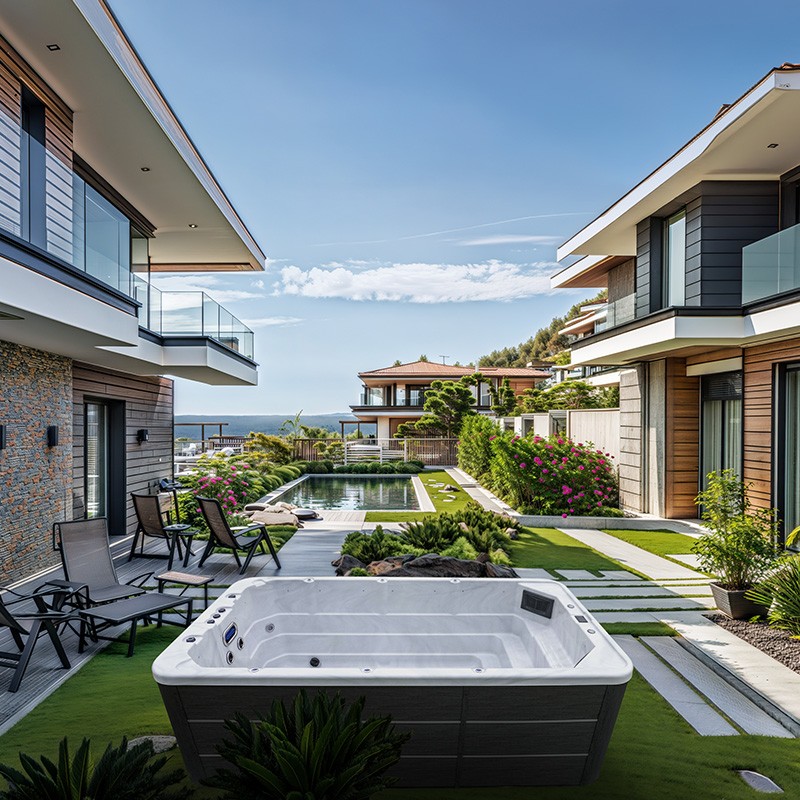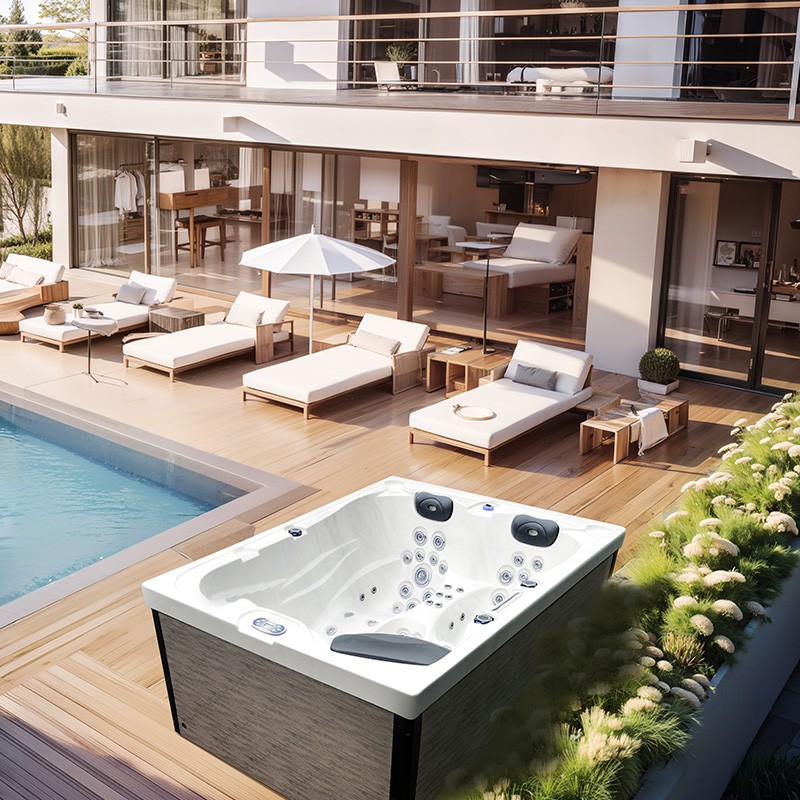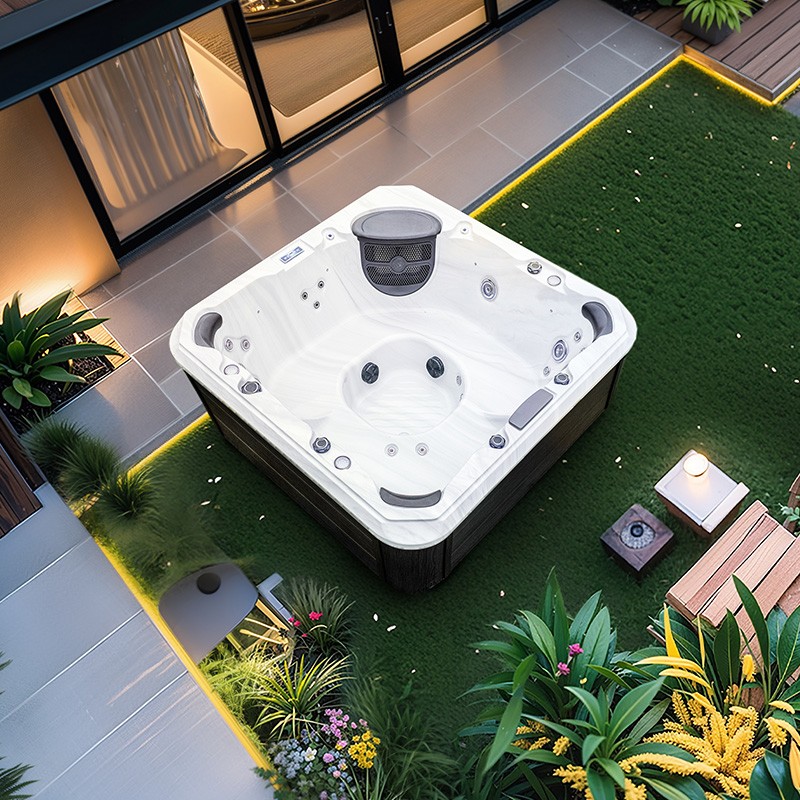
What tools are needed to maintain whirlpool spa hot tub water quality?
2025-08-14 15:35Whirlpool spa hot tubs, due to their superior massage and relaxation properties, have become essential features in many homes and commercial spaces. Maintaining water quality is crucial to ensuring long-term, stable operation and user experience.
Clean and balanced water quality not only ensures the comfort of a spa experience but also extends the lifespan of the whirlpool spa hot tub. Using the appropriate tools and methods to maintain water quality can significantly improve water management efficiency.
This article details the tools commonly used for whirlpool spa hot tub water quality maintenance and how to use them to ensure clean, fresh, and healthy water. Understanding these tools and mastering their use are crucial steps to maintaining clean water quality.
Whirlpool spa hot tub water quality: Why is it important?
1. Health and safety
Water quality management is crucial to maintaining user health. Over time, improper water quality in a whirlpool spa hot tub can easily breed harmful microorganisms such as bacteria, algae, and fungi, which can cause skin infections, allergic reactions, and even respiratory illnesses. Effective water quality management can prevent these issues and ensure a safe spa experience.
2. Protecting the Equipment
Poor water quality not only affects health but can also damage various components of a whirlpool spa hot tub. For example, high concentrations of minerals and chemicals in the water can accumulate on critical components like the heater, pump, and nozzles, reducing equipment efficiency and even leading to premature failure. Therefore, regular water quality maintenance can effectively reduce equipment failures and extend its service life.
3. Improving Spa Results
The cleanliness of the water directly impacts the spa's effectiveness. Clear water effectively promotes water circulation and heating, enhancing the massage effect. Proper water quality maintenance ensures a more comfortable spa experience and enhanced relaxation.
Whirlpool Spa Hot Tub: What are some common water quality issues?
During daily use, a whirlpool spa hot tub may experience various water quality issues. These issues are often related to factors such as water hardness, pH, and bacterial and algae growth. The following are some common water quality issues:
· Scale accumulation: Mineral deposits in the water can form scale on the heater, nozzles, and pipes of a whirlpool spa hot tub. Scale not only reduces heating efficiency but can also cause damage to the equipment.
· Water pH imbalance: If the pH of the water is too high or too low, it can affect water clarity and potentially corrode the equipment. Maintaining the pH within the appropriate range is crucial.
· Bacterial growth: After years of use, a whirlpool spa hot tub may harbor microorganisms such as bacteria and mold, affecting water cleanliness.
· Algae growth: In humid environments, algae and fungi can multiply, causing water turbidity and odor.
What tools are needed to maintain whirlpool spa hot tub water quality?
To ensure clean and healthy water, whirlpool spa hot tub water quality management requires the assistance of specialized tools. These tools can help users accurately test water quality, clean the equipment, and control chemical concentrations. The following are some common and essential tools:
1. Water Quality Testing Tools
Water quality testing tools are the first step in managing the water quality of a whirlpool, spa, or hot tub. These tools allow users to regularly monitor key parameters such as water hardness, pH, and chlorine content, identifying water quality issues and making adjustments promptly. Common water quality testing tools include:
· pH test strips: Used to measure the pH of a whirlpool, spa, or hot tub water, ensuring it's within the ideal pH range (typically between 7.2 and 7.8). High or low pH levels can affect both water quality and the equipment.
· Water Hardness Tester: Used to measure the content of minerals such as calcium and magnesium in water to determine water hardness. Hard water can easily form scale, which can affect heating performance and equipment life.
· Chlorine Tester: Used to measure the chlorine content in a whirlpool, spa, or hot tub water. Adequate chlorine levels effectively kill bacteria and disinfect, but excessive levels can cause poor water quality and produce a pungent odor.
· Total Alkalinity Tester: Total alkalinity is the buffering capacity of water, which affects pH stability. Regularly testing the total alkalinity level helps maintain the water's pH within a normal range.
2. Water Filter
The water filtration system commonly used in whirlpool spas and hot tubs includes a bacterial filter and an activated carbon filter, which effectively remove impurities, bacteria, and odors from the water. Water filters help reduce contaminants in the water, resulting in cleaner, clearer water and ensuring comfort and safety.
· Bacterial Filter: This filter is specifically designed to filter out tiny particles and bacteria from the water. It effectively prevents the growth of microorganisms in the water, ensuring the cleanliness of the whirlpool spa and hot tub water.
· Activated Carbon Filter: Activated carbon has a strong adsorption capacity, removing chlorine, odors, grease, and other harmful substances from the water. Activated carbon filters not only improve water quality but also extend the life of other water quality equipment.
3. Pump Cleaning Tools
The water pump is the core component of the water flow and massage function of the whirlpool spa and hot tub. If the pump becomes clogged or dirt accumulates, it will cause water flow to be restricted, affecting water quality and temperature. Therefore, regular pump cleaning is crucial. Common cleaning tools include:
· Pump Cleaner: Professional pump cleaners effectively remove mineral deposits, grease, and other impurities from the pump, keeping it running efficiently.
· Pipe Brush: A specialized pipe brush is used to clean dirt and deposits from the inside of pipes, ensuring unimpeded water flow and preventing damage to the whirlpool, spa, and hot tub pump and heater.
4. Descaling Agent
Scale buildup is a common problem in whirlpool, spa, and hot tub water maintenance, especially in hard water areas. Scale buildup not only affects heater efficiency but can also damage the unit. Descaling agents are chemical agents specifically designed to remove scale. Using descaling agents regularly cleans the heater, nozzles, and plumbing system to prevent scale buildup.
· Liquid Descaling Agent: Liquid descaling agents can be effectively removed by adding them to the tub water and running the pump for a period of time.
· Powder Descaling Agent: Powder descaling agents are commonly used to thoroughly clean the heater and pipes. To use, the powder is dissolved in hot water and circulated through the pump.
5. Chemical Dosing Tools
Whirlpool and spa hot tub water quality management relies on the use of various chemicals, such as chlorine, disinfectant, and pH adjuster. Chemical dosing tools ensure accurate dosing of these chemicals to maintain balanced water quality.
·Automated Chemical Dosers: These devices automatically dosing chlorine, disinfectant, or pH adjuster based on set water quality parameters, preventing overdosing.
·Manual Dosers: Manual dosers are suitable for small-scale water quality adjustments. Whirlpool and spa hot tub users can manually add the required chemicals based on water quality test results.
Common Considerations for Whirlpool and Spa Hot Tub Water Quality Maintenance
1. Regularly Check and Test Water Quality
To ensure optimal water quality in your whirlpool and spa hot tub, users should regularly use a water quality tester to check the pH, hardness, and chlorine content.
2. Regularly Clean the Water Filter and Pump
Spa hot tub water filters and pumps are essential components of water quality management. Regular cleaning and maintenance can improve water flow efficiency and prevent the accumulation of contaminants.
3. Adjust Chemical Concentration
Excessive or insufficient chemical concentration can affect water quality and equipment operation, so chemical concentrations should be adjusted based on water quality testing results.
What materials and components do you use in your spa manufacturing process?
We only use high-quality, globally recognized materials for all our spa products. For example, our spa shells are made with Aristech Acrylics, a U.S.-based brand known for its durability and UV resistance. Our control systems are supplied by Balboa, a trusted name in spa electronics. LX pumps, widely used in premium spa units, power our massage and circulation systems.
Every component—from jets and valves to pillows and filtration systems—is selected for long-lasting performance, making us a reliable supplier and manufacturer of premium outdoor spas.




